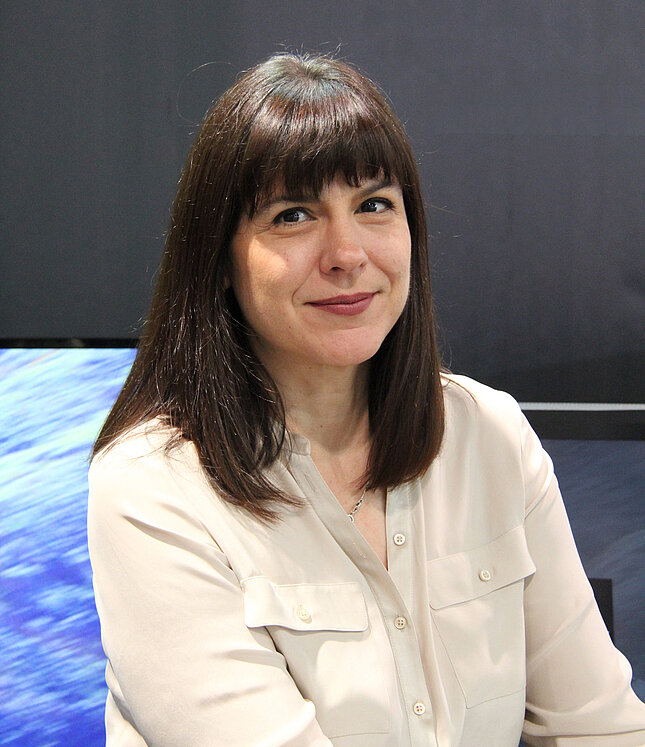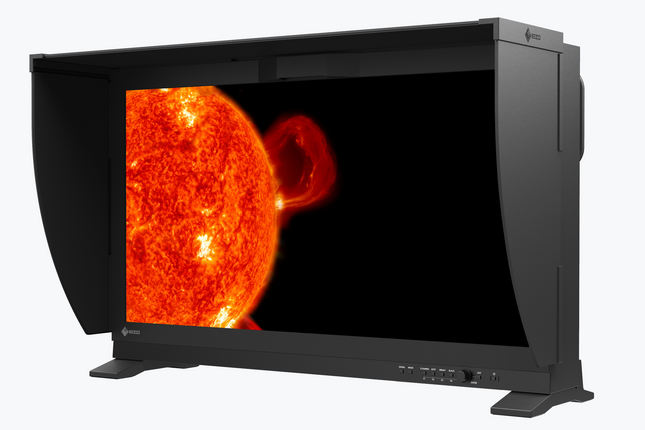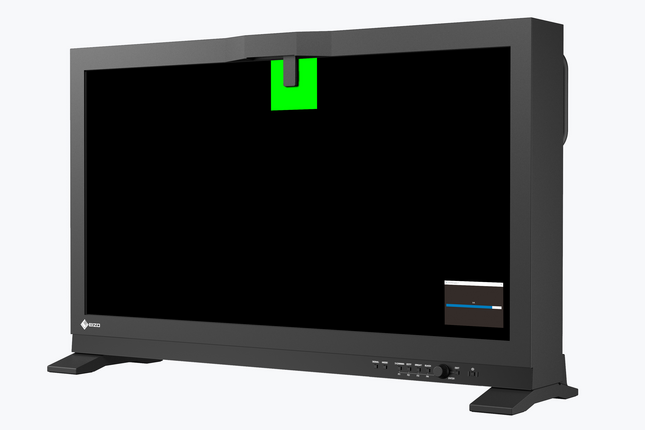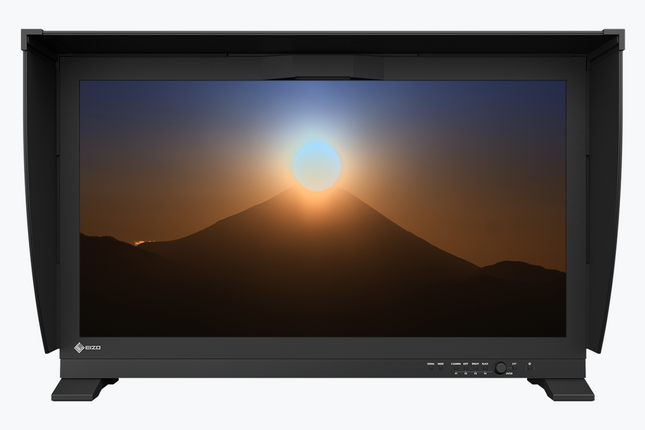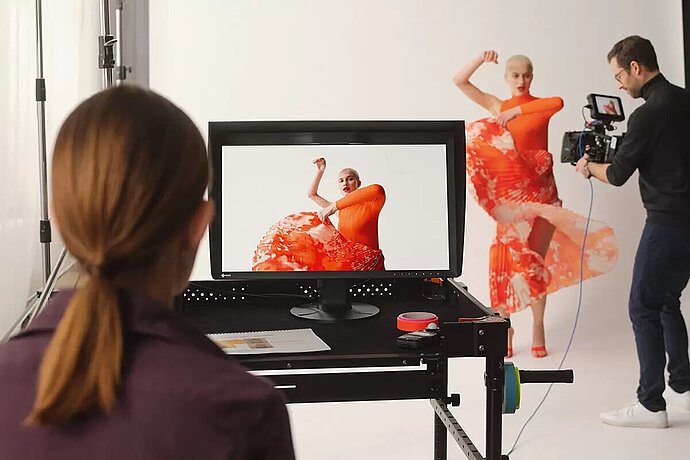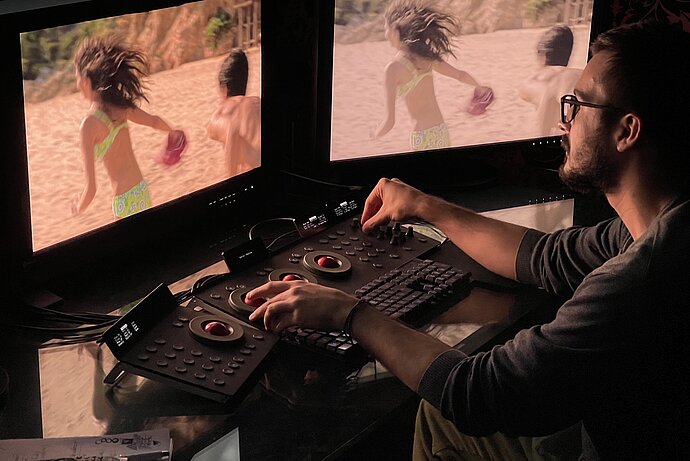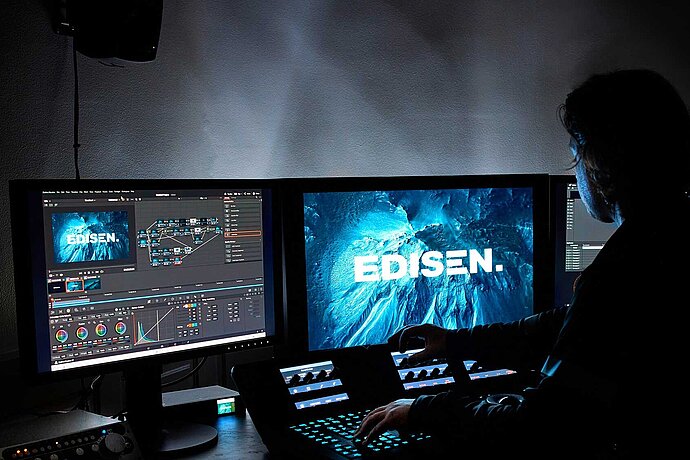Marquise Technologies develops state-of-the-art solutions for digital cinema post-production, the broadcast industry and OTT content providers (delivery of video and audio content over Internet access without involving an Internet service provider).
ColorEdge Reference
Marquise Technologies

The company targets post-production facilities and digital film labs, providing them with high-end solutions for mastering, QC and transcoding solutions for digital cinema, broadcast and online.
For creating and distributing high-quality professional content, Marquise Technologies software solutions offer numerous tools for monitoring image, sound and subtitles, comparing versions and verifying compliance with standards for content in SDR, HDR, HFR, and up to 8K.

"In the post-production industry, a reference monitor is essential!"
Find out what challenges the post-production industry is facing and with which solutions Marquise Technologies and the PROMINENCE monitor from EIZO offer support in the interview with Dan Tatut, VP Business Strategy & Development, at Marquise Technologies.
What does Marquise Technologies use the PROMINENCE for?
We create tools, that is, software for post-production. Our international clientele is in the post-production business for cinema, television, video, the OTT market, and streaming or on-demand video platforms.
We are testing the PROMINENCE for our customers because it is an outstanding HDR reference monitor for their workflow and can make their work much easier. As a reference monitor, it offers maximum quality.
Why is this so important?
The output from each device is different. Different brands and formats of TV, cinema screen, laptop, tablet, smartphone have different capabilities and display content differently. When we work with a standardized HDR process, we have the assurance that our customers can display and deliver their content optimally.
The PROMINENCE is a so-called reference monitor that renders the image under ideal display conditions and serves as a reference for comparison with the automatic display of an output medium. Our customers prepare their content with our software according to this reference and compare this reference with what the users will see at home. As a result, when you watch a crime movie on your TV at home tonight, the picture is optimized for your brand of TV.
How does this work exactly?
For example, our customers, the post-production companies, put together the content for a movie with picture, sound, subtitles and package that into a specific format. Each industry segment has a different format with very specific specifications. At Marquise, we create what we call deliverables, or masters, for a high-quality environment. For example, when our clients deliver content to Netflix, they use our software to create the content and deliver it in that specific Netflix format.
When you create content, how do you ensure that the best possible version of the image is displayed on every device?
The content must be adapted to the output medium. To do this, the content is sent along with metadata to tell the display how to interpret the content. For the right metadata, which is for example Dolby Vision or HDR 10+, for a particular display, a reference is needed that provides the best possible quality. Metadata created in this way is then packaged with the content. So when a film is displayed on a smartphone or a TV, the metadata that goes with the content tells the device to increase or decrease the brightness or change the colours.
What does the workflow look like?
The actual workflow is to start with the reference monitor to prepare the best possible conditions and then, based on that, decide how to adjust the image for certain classes of devices. If the mobile phone is not able to display the same luminance values as the PROMINENCE, the colour on the mobile phone is changed slightly so that it looks similar to the PROMINENCE. You look at the reference and try to get the best possible result with it, i.e. the best possible view on all possible displays, whether they show HDR or SDR.
That is what mastering means. You have to know all these different classes and then adjust the metadata, but that is only possible if you have a reference.
What are the particular challenges?
We don't work with static images, but with moving images. The challenge is especially apparent with a high dynamic range, when an image with a very high luminance is followed by one that is dark. Here, the monitor must be able to adapt and change from one state to the other quickly enough to avoid ghosting and displacement artifacts.
What do you specifically like about the PROMINENCE, even when compared to competing products?
It is optimal for this work, even compared to other monitors. One of its key features is the very good reproduction of blacks. This is important when working with dark images, where you also need to see the details that are in the shadows. If a reference monitor is not able to reproduce this properly, dark content cannot be shown correctly on all displays.
Imagine a horror movie where everything happens in the dark. Now if no details are visible in the output medium, there is no horror movie. Therefore, it is very important that the reference monitor has a very large power range so that the mastering operator can prepare the content so that it not only looks right from a photographic point of view, but also conveys the message of the film.
Your conclusion?
Our customers need high-end output and for that they need a tool to display high-end output properly. With a PROMINENCE, everyone works with the same reference. If you don't edit the content on a reference display, in the worst case you produce images that are not good when the viewer looks at them at home.
